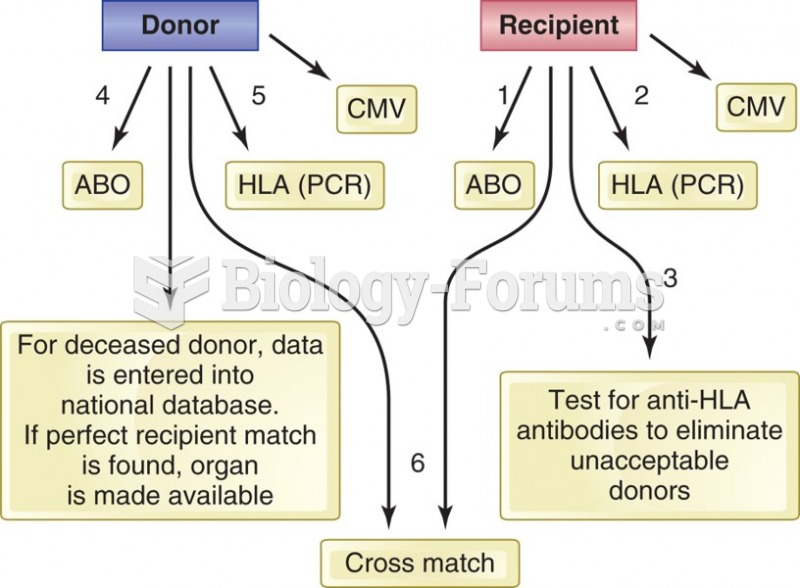This topic contains a solution. Click here to go to the answer
|
|
|
Did you know?
Inotropic therapy does not have a role in the treatment of most heart failure patients. These drugs can make patients feel and function better but usually do not lengthen the predicted length of their lives.
Did you know?
Asthma cases in Americans are about 75% higher today than they were in 1980.
Did you know?
Eating food that has been cooked with poppy seeds may cause you to fail a drug screening test, because the seeds contain enough opiate alkaloids to register as a positive.
Did you know?
Disorders that may affect pharmacodynamics include genetic mutations, malnutrition, thyrotoxicosis, myasthenia gravis, Parkinson's disease, and certain forms of insulin-resistant diabetes mellitus.
Did you know?
The longest a person has survived after a heart transplant is 24 years.
 Flowchart of typical compatibility testing for donors and recipients. Both donor and recipient are ...
Flowchart of typical compatibility testing for donors and recipients. Both donor and recipient are ...
 Use one hand to knead posterior neck muscles. Place the other hand on the recipient’s forehead to ...
Use one hand to knead posterior neck muscles. Place the other hand on the recipient’s forehead to ...





